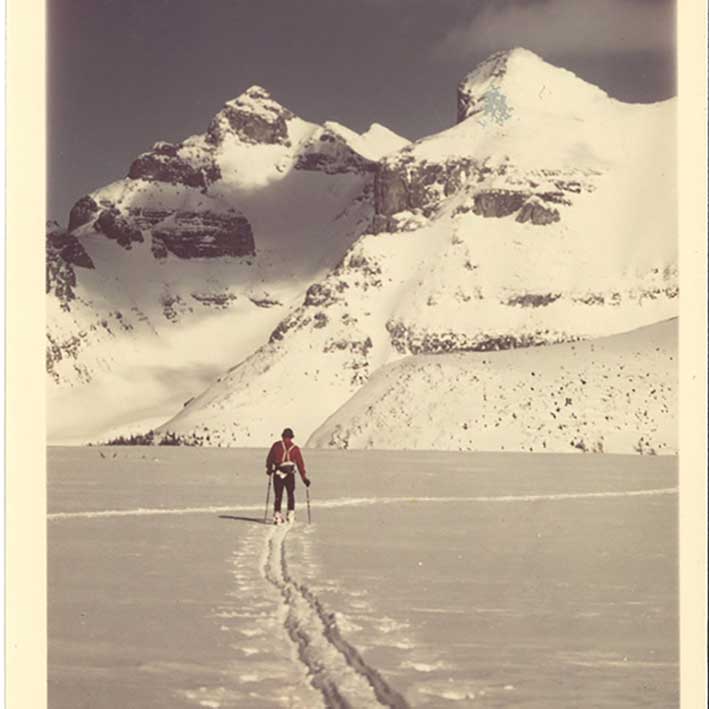Discover Sunshines mountain landmarks
![]()
Discover the fascinating history behind the mountains and landmarks of Sunshine Village as we jump into the journeys of explorers and the pioneers that defined this area and helped forge Sunshine Village into what it is today.
The year is 1841. Floor-length corset dresses are in vogue. Queen Victoria rules the British Empire, and British North America is slowly being discovered. There is no Canada per se, but the Hudson Bay Company exists. A young Scottish explorer named Sir George Simpson ventured into the Sunshine accompanied by his Hudson Bay Company Team. They're on the hunt for a shortcut through the Rockies that will help speed up the trade mission. Their goal was to find the fastest route through the Canadian Rockies and connect the Hudson Bay to the "Columbia District" fur trading district— a district stretching from southern Oregon to the then Russian-owned Alaska. As they travelled, Simpson and his team marked their journey on a tree in modern-day Sunshine Village, which can still be seen today at the Banff Park Museum National Historic Site of Canada in downtown Banff.
Simpson's Pass
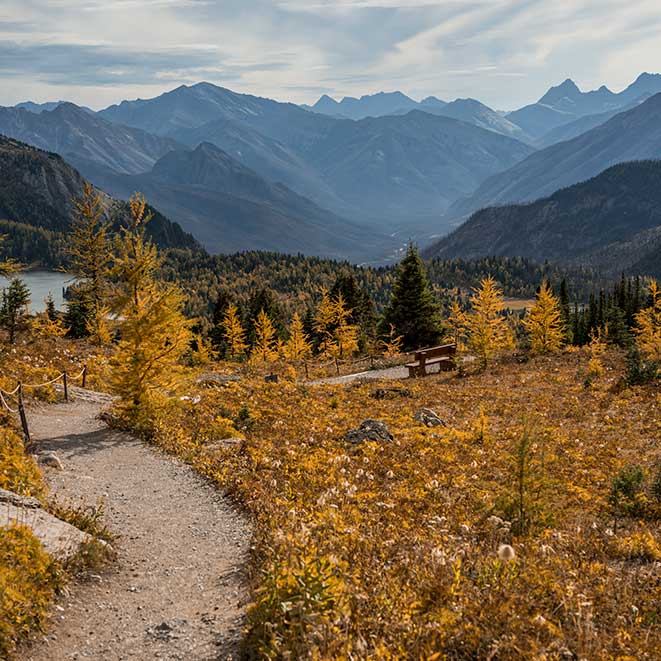
Although tourism wouldn't arrive in the area for another 50 years, Simpson's exploration left a lasting mark on the region. One great spot to explore is Simpson's Pass, located high on the Continental Divide, just like Sunshine. This mountain pass divides Alberta from its neighbouring province to the west. Following this pass will lead you to Healy Pass, one of the most popular hikes in Banff National Park, offering breathtaking views of surrounding peaks and Egypt Lake.
Eagle Mountain, AKA Goats Eye Mountain
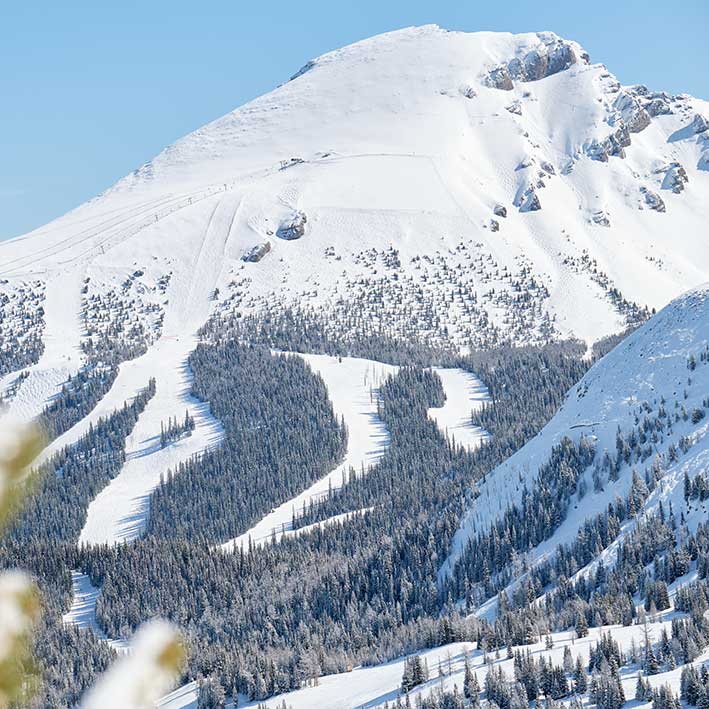
As Simpson embarked on his westward quest in 1841, he left a trail of named landmarks behind him. One such landmark is Eagle Mountain, more commonly known as Goats Eye Mountain. Although the mountain received its official name from the golden eagle that migrates through the Canadian Rockies twice a year, Simpson's exploration was the first to note the large rock arch on the mountain's north ridge, which earned the mountain the nickname Goats Eye Mountain. This unique feature noted by Simpson during his expedition still distinguishes the mountain today.
It would be almost 20 years later for the next significant exploration, the Palliser expedition, to make significant exploration through the Sunshine area. However, let's save that story for later.
Mount Bourgeau
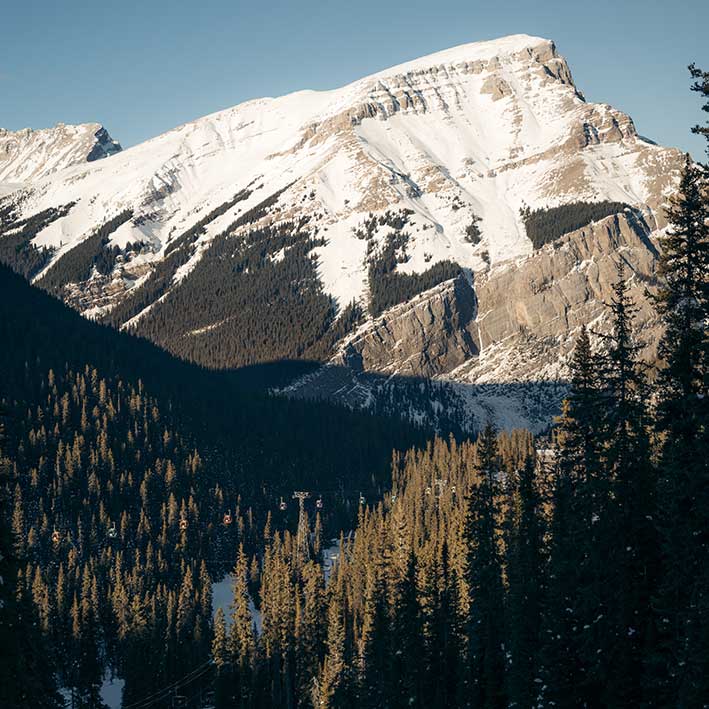
Next, meet the beautiful and imposing Mount Bourgeau, a majestic mountain you've probably already spotted while enjoying the Sunshine Gondola, skiing, or simply admiring the views around you. Standing at an impressive 9616 feet (2,931 meters), Mount Bourgeau is visible from the parking lot, Goats Eye Village, and the resort's summit. The mountain was named after a member of the Palliser expedition, a three-year scientific endeavour that began in 1856 and gathered information about the landscapes of northwestern North America. Eugene Bourgeau, a French botanist, played a significant role in this expedition, particularly while exploring what is now known as the Canadian Rocky Mountains. His contributions led to the naming of Mount Bourgeau, a peak that has become familiar to all of us.
Mount Howard Douglas
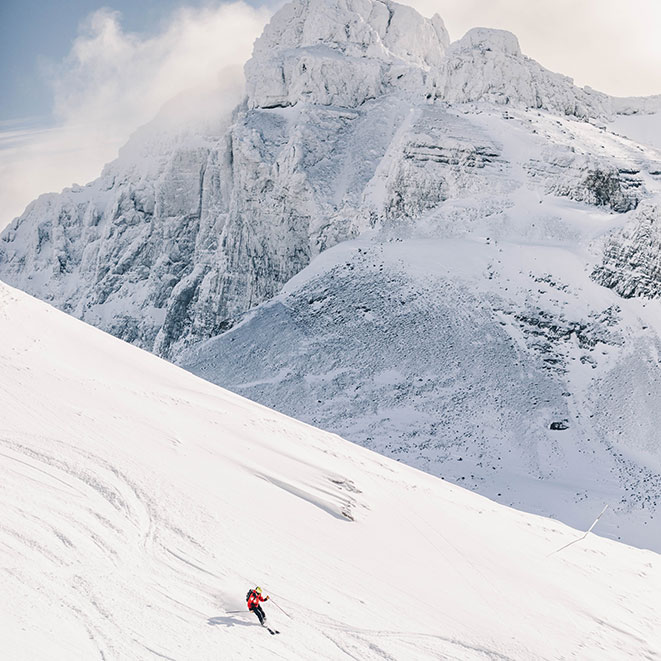
Now, let's turn our attention to Mount Howard Douglas, named in 1958 to honour Howard Douglas (1850-1929), a park superintendent who played a crucial role in expanding Banff National Park in the late 1880s.
Interestingly, as a young man, Douglas worked on the Canadian Pacific Railway, laying tracks across the prairies in the 1880s—which, once finished, put Banff National Park on the map at an international level. So technically, he was even helping expand the park before his time as park superintendent!
Mount Howard Douglas is a popular destination for hikers and climbers, boasting several glaciers you may have already glimpsed while skiing. The peak is situated between the Goats Eye and Teepee Town chair lifts. We're fortunate to have Mount Howard Douglas as one of the magnificent mountains that embrace Sunshine Village.
Mount Assiniboine
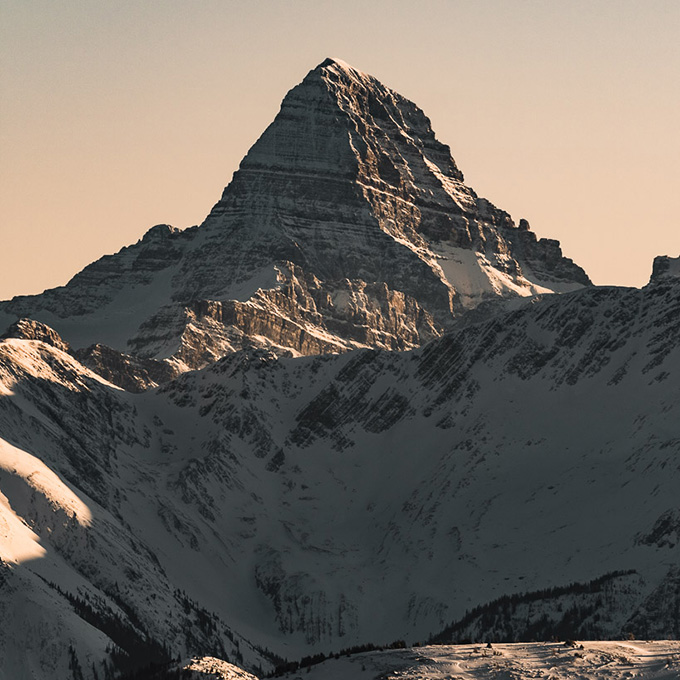
Now, let's uncover the story of one of our most iconic mountains, the one we're lucky enough to see daily at Sunshine Village— Mount Assiniboine. Standing proudly at 11,870 feet (3618 meters), Mount Assiniboine is the tallest peak in the Southern Continental Ranges of the Canadian Rockies.
In 1885, Nova Scotian scientist George M. Dawson named the mountain during the same year when Banff became Canada's first national park. When Dawson laid eyes on Mount Assiniboine, he was reminded of the plumes of smoke rising from the teepees of the Assiniboine First Nation people, who had hunted in the area for generations. Dawson named the peak "Assiniboine" after the Ojibwe word for tribe.
Simultaneous to its naming, early Banff warden Bill Peyto would be one of the first to guide tourists through the Sunshine Meadows, leading them on horseback tours to the base of Mount Assiniboine. In the 1920s, the Canadian Pacific Railway advertised the peak as the "Matterhorn of the Rockies, " perfectly illustrating its size. Mount Assiniboine stretches across the borders of Alberta and British Columbia.
Twin Cairns and Wawa Ridge
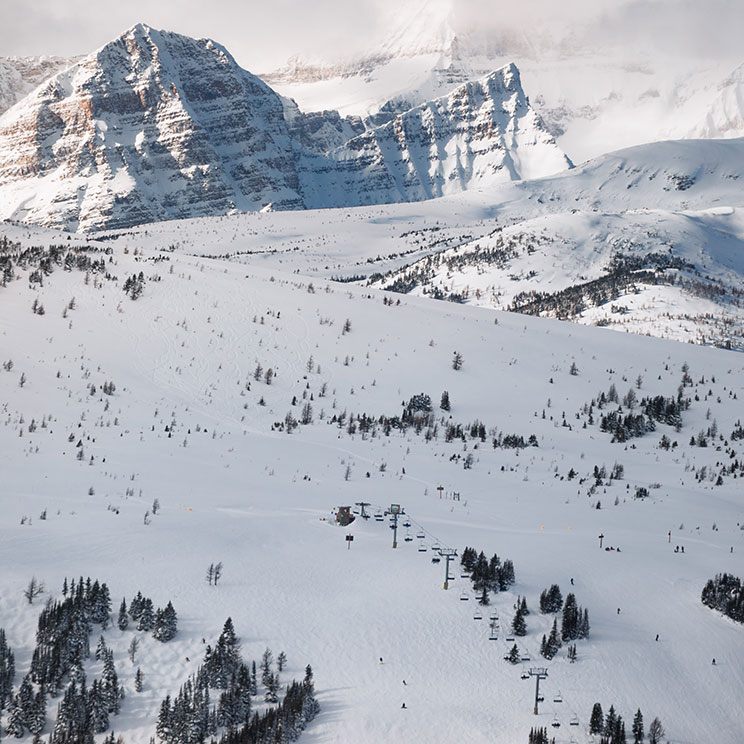
Another notable feature in the Sunshine area is Twin Cairns, located on the edge of Alberta and BC along the Continental Divide, just outside Sunshine Meadows. Twin Cairns is easily identifiable by the two nearly identical piles of stones, known as cairns, atop the ledge. Our Wawa Ridge is only three kilometres west of here, which offers an incredible experience for hikers. The unofficial name "Wawa Ridge" refers to the high points that separate Sunshine Creek from Healy Creek. The word "Wawa" has Aboriginal origins and means "big," which is quite fitting since the peak itself is almost 8,000 feet high (2438 meters). Interestingly, while Wawa Ridge is impressive, many of the surrounding mountains in the Sunshine area are even larger, making its naming somewhat ironic.
Lookout Mountain
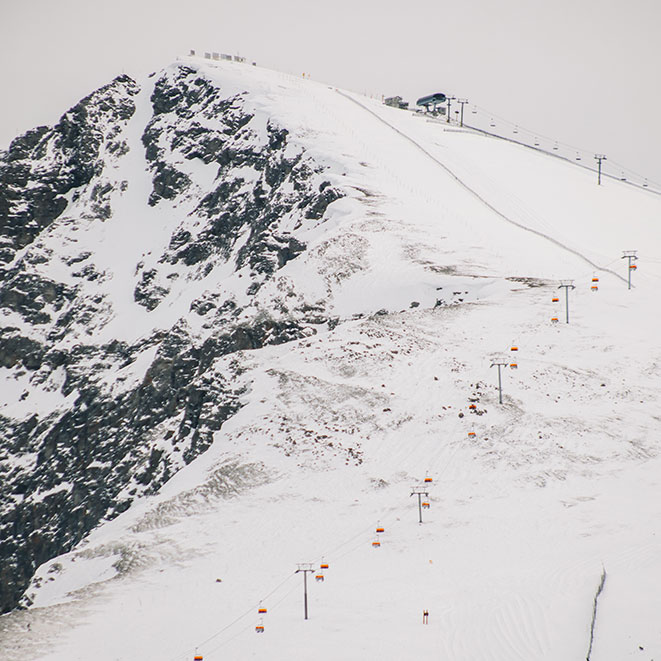
Lookout Mountain offers extraordinary views and is home to some of your favourite winter chairlifts, including the Teepee Town, Angel Express, and the Great Divide. When riding up Great Divide, you'll pass a large "rock" aptly named Brewster Rock. That mid-lift rock is called Brewster Rock after Banff's Brewster family— pioneers and ambassadors of the Canadian Rockies. If you love skiing at Banff Sunshine, you can thank the Brewster family, as they were instrumental in opening Sunshine as a high camp and ski destination.
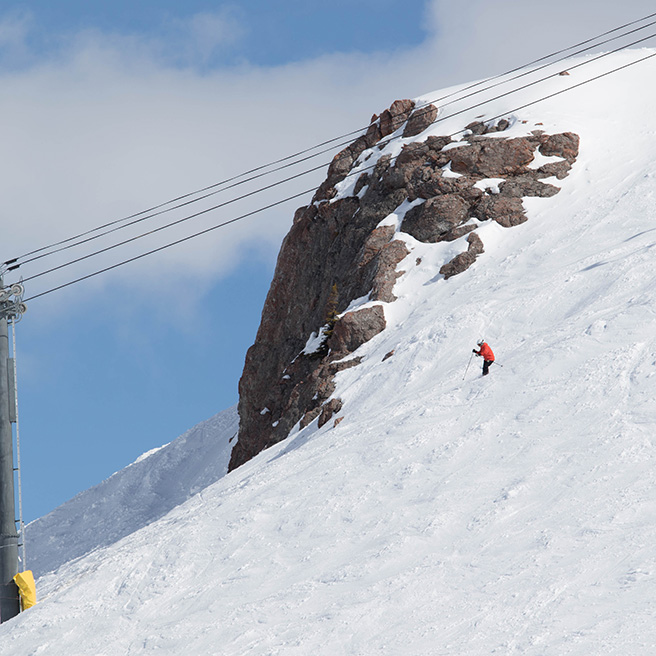
Lookout Mountain provides a perfect vantage point for gazing at Mount Assiniboine, as well as the route to North America's most daunting run, the Delirium Dive.
From Simpson's Pass to Mount Assiniboine, each mountain and landmark in Sunshine Village tells a story, connecting us to the rich heritage of this remarkable place.

